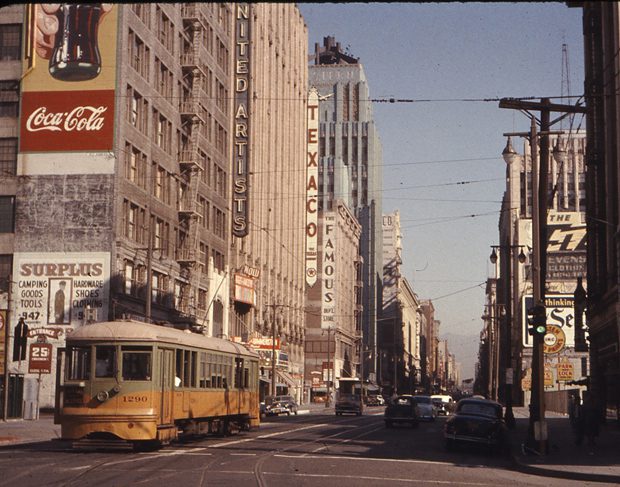During excursions, tourists often ask if there have been streetcars in the city. Interestingly, even some local residents know nothing about the city’s railway system. In the 1920s, Los Angeles had the most extensive tram network in the world, represented by red and yellow models. la-future will tell you more about the history of streetcars and interesting facts related to them.
Early history of trams
In 1887, the first urban electric streetcar line was opened. At that time, the city’s population reached 50,000. In general, it was a time of development and innovation, especially after the launch of the Transcontinental Railroad. The two companies, which will be discussed later, merged in 1895. Thus, the Pasadena and Pacific Railway Company was created, leading to the growth of tourism in Southern California under the motto “from the mountains to the sea.”
It is interesting that one of the goals of building the first electric railway in Los Angeles was to facilitate the sale of real estate on Pico Boulevard, the city’s main street.
The network expanded, encompassing two major companies.
- The Pacific Electric Railway Company (PE or the Red Cars, widely known for its red cars) was a private public transport system in Southern California. The system consisted not only of electric streetcars but also interurban cars and buses, connecting the northern, eastern, southern and western districts. It’s important to note that it was the largest electric railway system in the world in the 1920s, with nearly 1,500 miles of track and over 2,500 daily services.
- The Los Angeles Railway (LARy, later known as Los Angeles Transit Lines, recognized for its yellow cars) was a streetcar system that operated in the city and surrounding areas from 1895 to 1963. This company carried many more passengers (by some estimates, twice as many) than the Red Cars.

Private companies
For the development of Los Angeles, it was important for a street railway to be owned by private companies instead of public utilities. In this case, they were wealthy investors who bought large tracts of land around the city.
The Pacific Electric Railway Company was owned by Isaias Hellman. He was a prominent figure in the city’s history, the first American banker and philanthropist and founder of the University of Southern California. He was born in the Kingdom of Bavaria but then moved with his family to Los Angeles, where he significantly contributed to the city’s growth.
The Los Angeles Railway belonged to Henry Huntington, who was well-known as an American railroad king, as well as an art and rare book collector. He resided in Los Angeles and owned the Pacific Electric Railway. Henry also possessed large real estate holdings. Many famous places in California were named in his honor, as he played a major role in the development of Los Angeles in many aspects.
The companies of Hellman and Huntington laid the trolley lines from the city center to their agricultural lands. After that, they started building housing. Railway companies were considered to be unprofitable, but rich investors changed that opinion. At that time, most of Hollywood, San Gabriel and Huntington Park were built up by residential areas served by streetcars.
Considering all of this, it can be said that new housing developments were built in the suburbs, which is one of the key reasons why downtown Los Angeles is not characterized by high population density. Instead, all districts of the city have an equal number of residents.

Streetcars and Cars: Competition
So, what happened to the tram network in the city? It had such a promising beginning but eventually lost to cars. Let’s take a closer look at the probable causes for this.
- In the 1920s, the number of automobiles began to increase, especially in Southern California. Car manufacturers also liked this place.
- The owners of streetcar companies did not make important investments in the industry, as they were not very interested in the transportation business. As a result, the network became neglected and less reliable, losing its previous positions.
- In the 1950s, the city government started the construction of highways, some of which followed the routes of tram lines. Thus, the whole situation and the operation of streetcars became even worse. They ran on the same streets as all cars without the advantage of using freeways, as they once did.
- The travel time increased. If previously it used to take about 45 minutes to get from Long Beach to the central part of Los Angeles, by the 1950s, it was already 1.5 hours.
Therefore, tram lines started to be closed one after another. According to one interesting version, this was due to the fact that the rail operators were bought out by a corporation owned by major car manufacturers and oil companies. They urged the population to fully switch to bus or other transportation modes.
The last streetcars in Los Angeles ceased running on April 9, 1961. Photos of them have been preserved. It is important to note that the city authorities have an ambitious plan to reintroduce trams.



